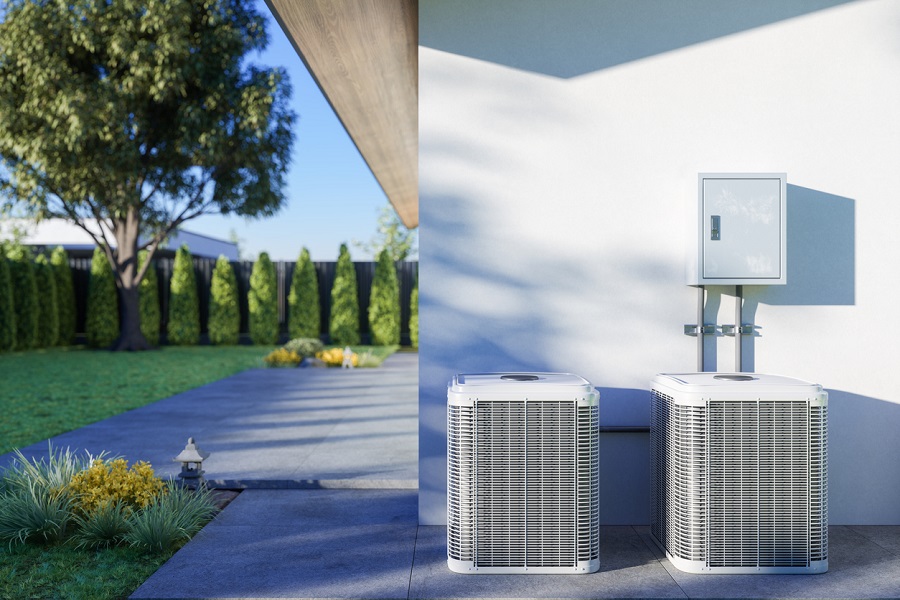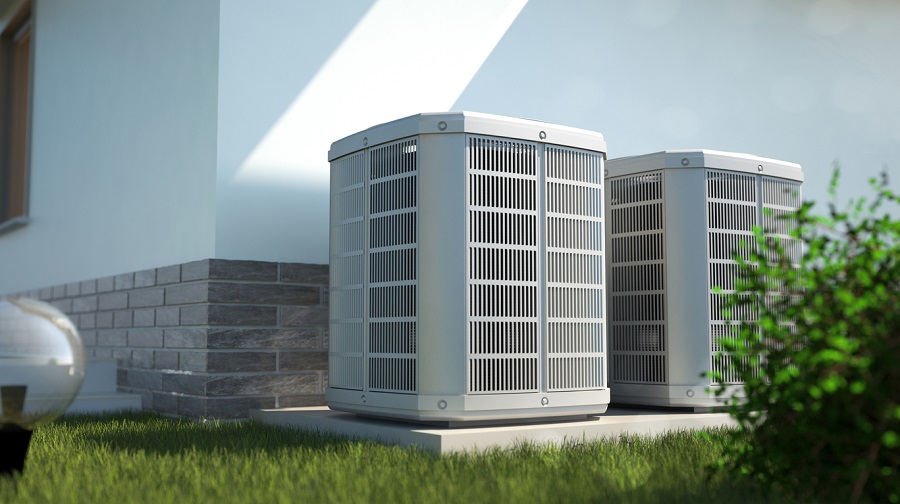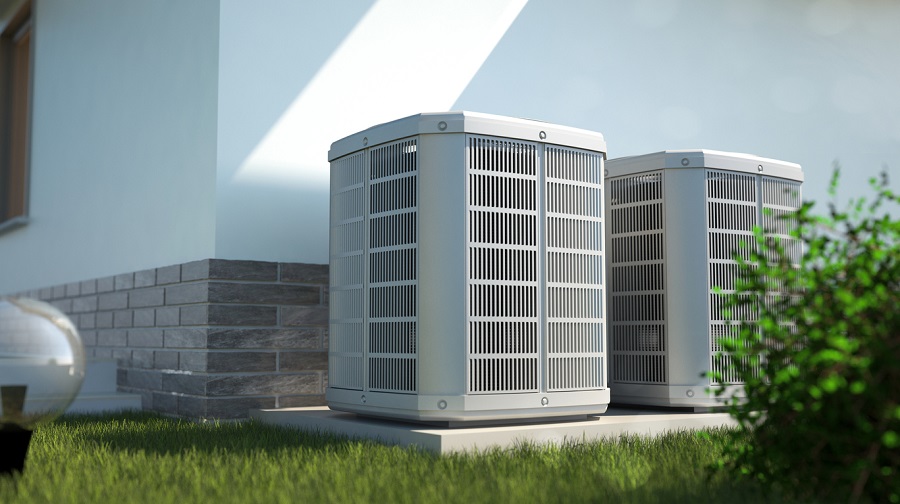How Much To Install Central Air Conditioning 2023
Depending on your home and the size of your AC unit, installing a central air system will cost anywhere between $3,000-7,000. So let us look at the factors that determine your final price and how you can lower that price for your home.
The Average Cost of Air Conditioning
On average, installing a central air system costs around $5,600. On the low end, you can expect to pay around $3,800 for a smaller system and $7,500 for a larger system. Keep in mind that the size of your unit, the home size, type of unit, duct system, and home repairs are all primary factors that affect your final price.

Home Square Feet
Depending on the size of your space, you will need the following BTU capacity to fully cool your space. 20,000 BTUs costs roughly around $500-1,000 with a 48,000-50,000 BTU air conditioner will cost roughly $4-5,000. So depending on your square footage, you can expect to pay anywhere between $500-5,000.
- 1000-20,000 BTU
- 1200-24,000 BTU
- 1500-30,000 BTU
- 1750-35,000 BTU
- 2000-40,000 BTU
- 2500-50,000 BTU
Factors to Consider
There are multiple factors to consider when purchasing an ac unit and getting it installed. Here are the most common factors that will impact your final price:
Installation
Installation costs are a large factor in calculating your central air costs. More efficient models or those with a high SEER rating are generally more complex to install, which will increase their installation cost. However, high SEER ratings result in lower energy bills every month which eventually balances out and will actively save you money in the long term.
Home Size
In general, when it comes to both heating and cooling, you want to accommodate 20 BTUs with every 1 square foot available. This roughly translates to around 5,000-8,000 BTUs for a 150-350 square foot area. Calculating your space is critical when installing a central air system as it will allow you to better determine what size AC unit you require. If your space is smaller, you can choose a smaller model size which will ultimately save you money.
Brand
There are many popular brands on the market today when it comes to choosing AC units. American Standard, Amana, Lenox, Frigidaire, Coleman, Trane, and Carrier to name a few. But remember that oftentimes, you are paying for the brand name rather than the product. If you decide to chase after popular brands, you can easily pay an extra $1-2,000 dollars extra just for a brand name, so it’s important to do your research ahead of time and compare their products against others on the market.
Tax Credits and Rebates
Under the Inflation Reduction Act of 2022, you can receive up to $1,200 tax credit for the installation of a central air conditioner. The more energy efficient your system is, the more credit you will receive.
Seasonal Energy Efficiency Ratio (SEER)
A SEER rating is a measure of how energy efficient an air conditioner is. The ratings range from 13-25 for central air systems. The higher the rating, the less energy they use, and the lower your utility bill. There is a trade-off, however, as higher SEER systems are generally more expensive initially, but will save you money long-term as they require less energy to operate.
Type of Air Conditioner
The type of air conditioner you choose also heavily impacts your final price. Every type of air conditioner is designed for a specific housing setup and choosing the incorrect type can lead to poor efficiency and high utility bills as a result. The types of air conditioners are central, Window, Ductless, Geothermal, and Dual Fuel, and each provide the home with its own positives and drawbacks.
Additional Considerations
There are other considerations to keep in mind when determining your final cost:
Duct Updates and Repairs
Central air requires ductwork to distribute the cold air throughout your home. If your duct system is not adequate for this task, you will need to update your existing system to accommodate any changes you make. Keep in mind that this is the best time to check for any needed repairs throughout your home as you will be remodeling other elements.
Additional Zones
If you want to expand the coverage of your central air system, you will need to accommodate additional zones which means expanding your ductwork as well. Expanding your AC coverage will, of course, increase your utility bill as your system will need to work harder to accommodate the additional space.
Electrical Work
To support your central ac unit, you may need additional electrical work done to your home. You need to account for the cost of the work and the added drain to your home’s power as well.
Mold Testing
While you are installing your ductwork, check your home extensively for any sign of mold. Mold can wreak havoc on your home’s substructure and be hazardous to the rest of your home. Catch it early to prevent any long-term damage to your home as it can be quite costly to repair in the future.
Permits
Ensure you have proper permits to remodel your home. Permits vary from city to city, but if you are constructing or adding onto your home without the right permits, you will not only get fined but have to spend a significant amount of money to correct your remodel to ensure it is up to code.
Extended Warranties
Appliances will break through extended use, so it’s best to invest in an extended warranty. Extended warranties usually cover your air conditioning unit and all necessary repairs which will save you a great deal of money in the future.

Types of AC Units
There are several major air conditioning units on the market, each designed for different homes.
Central Air Conditioning
The most common air conditioning type is designed for homes and large spaces. Central air uses electricity and several fans to disperse cool air throughout existing ductwork. Of all the variants, it provides cool air the fastest, but it also is the least energy efficient. Central air systems draw a large amount of power and will require maintenance to ensure their longevity. Central air systems average around $3-5,000 for a full installation.
Window AC Unit
Perhaps one of the cheapest solutions on the market, window AC units are designed to cool a single room. They feature multiple fans built into the system, some of which are used to distribute cool air and expel hot air through the window. These systems average around $300-400 and can be set up within a few minutes.
Portable Unit
A self-contained portable system with a built-in fan, portable units work similarly to other AC systems by pulling hot air and transferring it outside of the home. They have a built-in motor that helps them accomplish this task and a long hose to expel hot air. Typically, a portable unit is only slightly better than a large fan, as its size doesn’t allow it to move or redistribute air quickly enough to be noticeable. You can find a portable unit anywhere between $300-2,000 and can be set up anywhere in your home.
Ductless Mini-Split
A ductless mini-split is just that, an ac unit that does not require ductwork to function. This is accomplished by having one outdoor unit and one indoor unit that is connected by refrigerant tubing and electrical wiring. The two units work in tandem to redistribute cool air into the home while expelling any heat from the home. This allows you to control temperatures much easier in your home by using cleverly designed zones. Ductless mini-splits cost $1,500-8,000 including installation costs.
Geothermal
Geothermal heat pumps provide both heating and cooling solutions by capturing heat below the ground, compressing it, and sending it to the evaporator coils which then heat or cool your air. This process is much less demanding than other AC solutions, but installing a geothermal system is perhaps the most expensive and complicated install. It requires digging trenches and laying out extensive pipes to set up, which averages around $13-20,000. However, a geothermal system is one of the most efficient means of providing your home with heating and cooling.
Dual Fuel
Similar to a central air system, a dual-fuel system uses both a furnace and a heat pump to control the temperature. The liquid refrigerant is pumped through an evaporator. Air is then blown across the coils where the hot energy is reabsorbed by the refrigerant. The result is cool air that is then blown throughout your home’s ducts. This process uses much less energy than a traditional air conditioner.
Tips on How to Save on AC Costs
There are multiple ways you can reduce the final cost of your AC unit. Here’s how:
Contact Multiple HVAC Companies
Contact multiple companies to compare rates and services. Many companies will offer competitive rates for their services, so you can cherry-pick which company you want to work with.
Research Credits and Rebates
There are many credits, rebates, and special deals available. Since AC installation is quite expensive, many companies will offer deals from time to time. Simply look up deals for companies in your area to get a discount on services or a new system.
Bundle HVAC Projects to Save
Many companies will offer a significant discount on their services if you bundle many HVAC projects together. If you have multiple appliances that require replacement/installation, schedule them together to receive a discount.
Consider Installing in the fall
Schedule installation or repair services in the fall or outside of the peak months, which are usually summer. By doing this, many companies will provide you with better customer service and reduced prices since the demand for their services isn’t as high.
Can I Install My Own AC Unit?
No, you cannot install an AC unit on your own. First and foremost, you need to be a licensed technician to install many components. Additionally, AC systems are quite complex and any error can lead to injury or damage to the system itself, so it’s best to leave it to a professional.
Air conditioning is a great addition to any home, but carefully select the type that is right for your home. Compare contractors and services, and install during the offseason to avoid spending too much on this addition.

